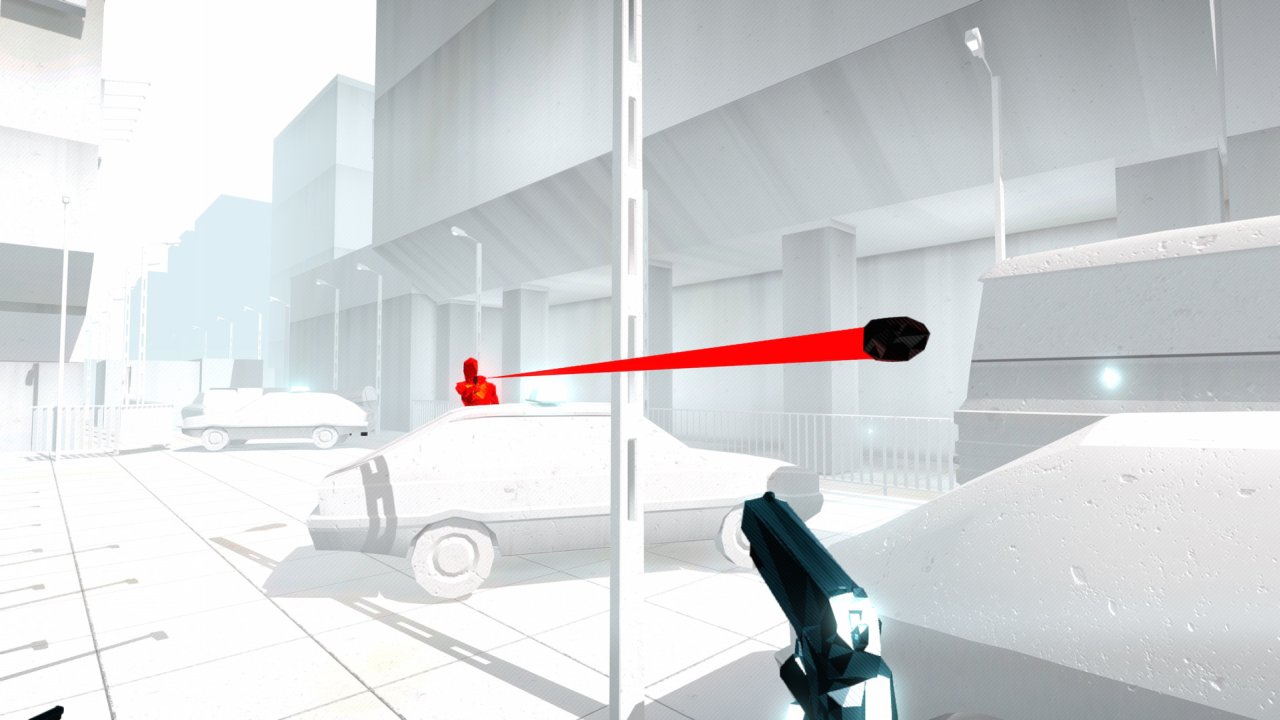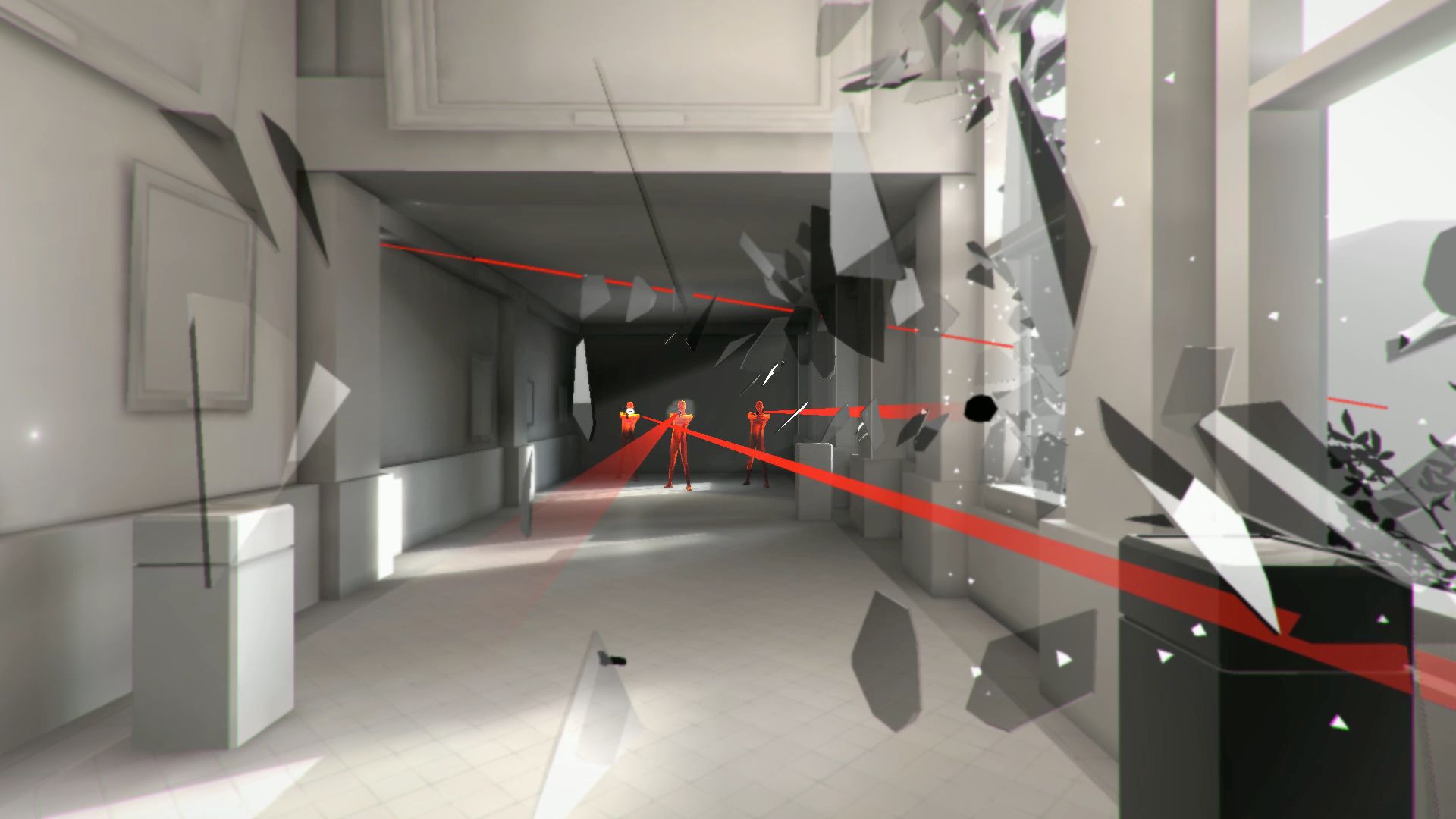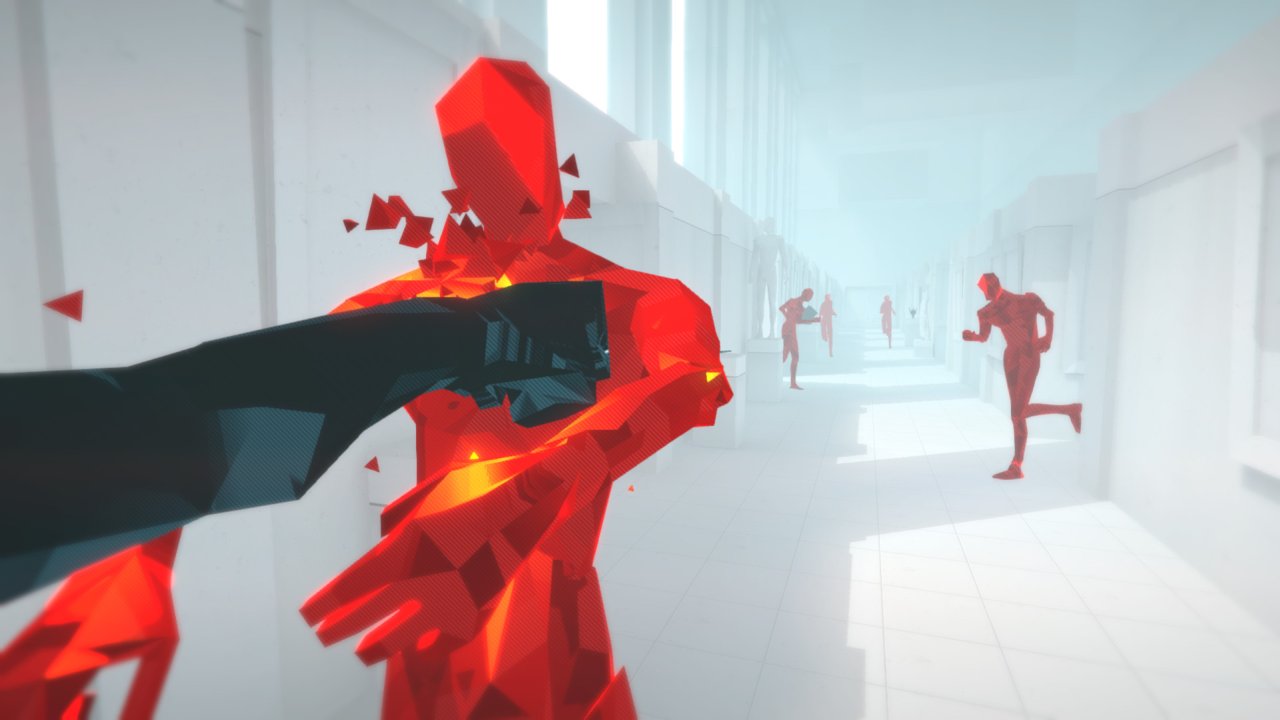Superhot Review
A great core mechanic is enough to recommend this tactical action game
Originally a browser game built for the Seven Day FPS challenge, Superhot began its existence in a rather humble corner of the video game industry. It was rudimentary and simple, but boasted an interesting hook: time only progresses as the player moves. What started as a game-making challenge became a prototype that found backing through Kickstarter and is now a full-fledged release. Taking a small browser game and turning it into something more substantial is a difficult challenge and the easy way out would be to simply replicate the same mechanics over and over again. Superhot manages to mostly avoid this pitfall and while it never really feels like something more substantial than a series of interesting puzzles, it does keep those puzzles varied enough to make the game worthy of your time.

The mechanics are everything in Superhot. It’s what sold the game to backers and its creative gameplay set it apart from other shooters. That’s because Superhot is only half of a shooter, wrapped up in a puzzle game. In many ways, shooters and puzzle games have some common threads and Superhot explores these threads through its time-based structure. You’ll still have to line up shots and anticipate enemy movement, but the encounters of Superhot would be impossible to most people in real-time - especially in the later levels where you might start with a gun pointed at your head. This is where the puzzle aspect comes in. Superhot forces players to think about how they use each second and how to keep time moving while avoiding enemy fire. You know those slow motion firefights from your favorite action movies? The scenes where the enemy has the hero surrounded with guns pointed at them, ready to fire, yet somehow the hero always escapes, gets a weapon, and takes everyone out? That’s the feeling Superhot is trying to recreate.
And does so fairly well. There’s enough cool twists to the gameplay that make the game more than dodging bullets and lining up kill shots. You almost never start with a gun in Superhot, meaning you’ll have to disarm an enemy through punching them or throwing an object at them. When you time these attacks right, the enemy will often throw the gun in the air, allowing you to catch it. If you run out of bullets, the best strategy is to throw your gun at an enemy in order to stun and disarm them. Some melee weapons can be thrown to kill enemies, like the katana. These little flourishes are a nice touch and add to the badass action-hero gameplay. You’re pulling off complex actions in quick succession while surrounded by enemies. The Superhot Team let you soak up your successful completion of a level by watching your action playout in real-time, so you can see how impressive your combat skills are.
I definitely appreciated Superhot’s creative mechanics and thoughtful action, but it doesn’t always deliver. The biggest issue is a lot of the early to mid-game levels, which are pretty easy. I would miss shots, waste bullets, and make a muck of the whole experience - only to pass with flying colors. When you go back and watch the footage of these fights, you wonder if Superhot’s mechanics were even necessary - could you have beaten that level if this were any old shooter? It’s not until some of the late game stages where you really have to commoditize your actions and time. That would be fine if the game was a little longer. It took me about two-and-half hours to beat Superhot - meaning that I only found about an hour-and-change of the game that made good use of mechanics.

The game’s narrative also feels like it is padding out the experience. The player receives the file superhot.exe from a friend, plays a bit of it, and quickly decides that it’s enjoyable but there’s not really much to the game. Soon some Illuminati-like power begins to communicate to the player as they become hopelessly addicted to the game. There’s a couple of metanarratives to the whole experience that gave me pause. In some ways it seems like Superhot is commenting on its inability to just be a game with a monochromatic atmosphere where you peg red guys with bullets and walk around to move time forward, but the way it does so isn’t very interesting. And the game-within-a-game narrative has never struck a chord with me. There’s another metanarrative about how addicting the game is that rings a little hollow - ending with what came off to me as a desperate plea for word of mouth advertising. Honestly, I could have done without the narrative completely.
Superhot makes up for this - and its short playtime - by unlocking Challenge missions and Endless Mode. The challenges are levels you’ve already beat with a wrinkle added to the design, like no restarts, speed-run trials, or fighting all enemies with only your bare hands. But the Endless mode is cool as you see how long you can survive while new enemies are constantly being thrown at you. This is where the heart of Superhot lies, in the ridiculousness of beating twenty-to-one shootouts through bullet dodging and using the environment around you.
Aesthetically, Superhot is a one-trick pony. Its monochrome environments with red enemies certainly gives the game a unique look, but it never goes anywhere after that. After some missions you will return to what looks like an old computer boot-screen that also is colored in black and white with red accent. There’s definitely cohesion to the look, but there’s never really any variety. Even as you battle through the final stage, it’s still the same. Again, the aesthetic is fine - but it hardly impresses.

The technical elements of Superhot are serviceable. The game hardly does anything to tax your computer, but it runs smoothly. This actually is important as the game makes itself look like it is glitching from time to time (part of that game-within-a-game stuff) so if Superhot did have any problems it would be annoying to try and figure out when your computer is failing and when the game is making it look like there’s an error.
Superhot is not flashy. It doesn’t have a lot of aesthetic qualities designed to impress you. It doesn’t spend a lot of time trying to flesh out a single-player experience worthy of remembrance. It mostly relies on what got it this far - the creative gameplay mechanic. For the most part, that is enough. After you get through the fairly easy opening hour, the game begins to become a thoughtful challenge worthy of your time, then offers to continue that experience with the Endless Mode. It’s rare that a game relies so heavily on pure gameplay to make it interesting, but Superhot does just that.
 Comments
Comments













